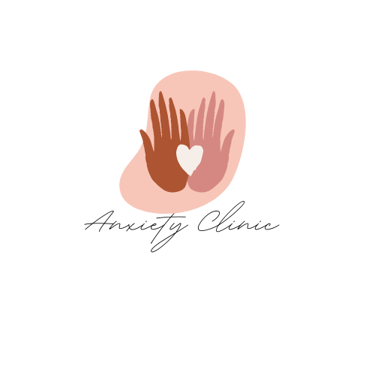For Questions: Text (833)233-0869
Breathing Techniques for Managing Anxiety


Introduction
Anxiety is a common mental health issue that affects millions of people worldwide. It can manifest in various ways, including feelings of worry, nervousness, or fear. While there are many treatments available for managing anxiety, one of the most accessible and effective methods is through controlled breathing techniques. In this article, we will explore the science behind how breathing impacts anxiety, discuss various breathing techniques, and provide practical tips on incorporating these techniques into your daily routine.
Understanding Anxiety and Its Effects on the Body
Anxiety is the body’s natural response to stress, and it can be beneficial in certain situations, such as preparing for a presentation or avoiding danger. However, when anxiety becomes chronic or overwhelming, it can interfere with daily life and lead to physical and mental health problems.
When you experience anxiety, your body goes into a "fight or flight" mode, which triggers the release of stress hormones like adrenaline and cortisol. These hormones prepare your body to deal with perceived threats by increasing your heart rate, quickening your breathing, and tensing your muscles. While these responses are helpful in short bursts, prolonged exposure can lead to symptoms such as:
Rapid heartbeat
Shortness of breath
Muscle tension
Fatigue
Difficulty concentrating
Controlled breathing techniques can help manage these symptoms by activating the body’s relaxation response, reducing the production of stress hormones, and promoting a sense of calm.
The Science Behind Breathing and Anxiety
Breathing is a vital function that influences many bodily systems, including the nervous system. The autonomic nervous system (ANS) controls involuntary actions like heart rate, digestion, and breathing. It has two main branches: the sympathetic nervous system (SNS) and the parasympathetic nervous system (PNS).
Sympathetic Nervous System (SNS): Often referred to as the "fight or flight" system, the SNS is responsible for the body's response to stress and danger.
Parasympathetic Nervous System (PNS): Known as the "rest and digest" system, the PNS promotes relaxation and recovery.
When you practice controlled breathing, you can stimulate the PNS, which helps counteract the effects of the SNS and bring your body back to a state of balance. This can reduce anxiety symptoms and improve overall well-being.
Effective Breathing Techniques for Managing Anxiety
1. Diaphragmatic Breathing
Diaphragmatic breathing, also known as belly breathing, involves breathing deeply into the diaphragm rather than shallowly into the chest. This technique can help activate the PNS and promote relaxation.
How to Practice Diaphragmatic Breathing:
Sit or lie down in a comfortable position.
Place one hand on your chest and the other on your abdomen.
Inhale slowly through your nose, allowing your abdomen to rise while keeping your chest relatively still.
Exhale slowly through your mouth, allowing your abdomen to fall.
Repeat for 5-10 minutes, focusing on the rise and fall of your abdomen.
2. Box Breathing
Box breathing, also known as square breathing, is a simple and effective technique that involves breathing in a rhythmic pattern. It can help calm the mind and reduce anxiety.
How to Practice Box Breathing:
Sit in a comfortable position with your back straight.
Inhale slowly through your nose for a count of 4.
Hold your breath for a count of 4.
Exhale slowly through your mouth for a count of 4.
Hold your breath for a count of 4.
Repeat the cycle for 5-10 minutes.
3. 4-7-8 Breathing
The 4-7-8 breathing technique, developed by Dr. Andrew Weil, is designed to promote relaxation and reduce anxiety by regulating the breath.
How to Practice 4-7-8 Breathing:
Sit or lie down in a comfortable position.
Place the tip of your tongue against the ridge of tissue just behind your upper front teeth and keep it there throughout the exercise.
Exhale completely through your mouth, making a whooshing sound.
Close your mouth and inhale quietly through your nose for a count of 4.
Hold your breath for a count of 7.
Exhale completely through your mouth, making a whooshing sound, for a count of 8.
Repeat the cycle for 4 breaths, gradually increasing to 8 breaths as you become more comfortable with the technique.
4. Alternate Nostril Breathing
Alternate nostril breathing, or Nadi Shodhana, is a yogic breathing technique that balances the left and right hemispheres of the brain and promotes a sense of calm and clarity.
How to Practice Alternate Nostril Breathing:
Sit in a comfortable position with your spine straight.
Close your right nostril with your right thumb.
Inhale slowly through your left nostril.
Close your left nostril with your right ring finger, then release your right nostril.
Exhale slowly through your right nostril.
Inhale slowly through your right nostril.
Close your right nostril with your right thumb, then release your left nostril.
Exhale slowly through your left nostril.
Repeat the cycle for 5-10 minutes, focusing on the breath and the sensation of air moving through your nostrils.
5. Progressive Muscle Relaxation Breathing
Progressive muscle relaxation (PMR) combined with deep breathing can help reduce physical tension and anxiety by systematically tensing and relaxing different muscle groups.
How to Practice PMR Breathing:
Sit or lie down in a comfortable position.
Take a few deep breaths, inhaling slowly through your nose and exhaling through your mouth.
Start with your feet and toes. Inhale deeply and tense the muscles in your feet and toes for 5-10 seconds.
Exhale and release the tension, focusing on the sensation of relaxation.
Move up to your calves, thighs, abdomen, chest, arms, hands, neck, and face, tensing and relaxing each muscle group in turn.
Finish with a few minutes of deep, diaphragmatic breathing.
6. Resonant or Coherent Breathing
Resonant breathing, also known as coherent breathing, involves breathing at a rate of about 5-6 breaths per minute. This technique can help synchronize the heart rate with the breath, promoting relaxation and reducing anxiety.
How to Practice Resonant Breathing:
Sit or lie down in a comfortable position.
Inhale slowly through your nose for a count of 5.
Exhale slowly through your mouth for a count of 5.
Continue breathing at this pace for 10-20 minutes, focusing on the rhythm of your breath.
Incorporating Breathing Techniques into Your Daily Routine
To effectively manage anxiety, it's important to make breathing exercises a regular part of your daily routine. Here are some tips to help you incorporate these techniques into your life:
Set Aside Time: Dedicate a specific time each day for practicing breathing exercises, such as in the morning, during lunch breaks, or before bed.
Create a Calm Environment: Find a quiet, comfortable space where you can practice without distractions.
Use Reminders: Set reminders on your phone or leave notes around your home to prompt you to practice your breathing exercises.
Combine with Other Relaxation Techniques: Pair breathing exercises with other relaxation methods, such as meditation, yoga, or listening to calming music, to enhance their effectiveness.
Be Patient: It may take some time to feel the full benefits of breathing exercises. Be patient with yourself and practice consistently.
Additional Tips for Managing Anxiety
While breathing techniques can be highly effective in managing anxiety, they are most beneficial when combined with other healthy lifestyle habits. Here are some additional tips to help manage anxiety:
Regular Exercise: Physical activity can reduce stress hormones and increase endorphins, improving mood and reducing anxiety.
Balanced Diet: Eating a well-balanced diet rich in fruits, vegetables, whole grains, and lean proteins can support overall mental health.
Adequate Sleep: Aim for 7-9 hours of sleep per night to help your body and mind recover from daily stress.
Limit Caffeine and Alcohol: Both substances can exacerbate anxiety symptoms, so try to limit your intake.
Social Support: Stay connected with friends and family, and consider joining a support group for individuals with anxiety.
Professional Help: If your anxiety is severe or persistent, consider seeking help from a mental health professional. Therapy, medication, or a combination of both may be necessary for effective management.
Conclusion
Breathing techniques offer a simple, effective, and accessible way to manage anxiety. By incorporating diaphragmatic breathing, box breathing, 4-7-8 breathing, alternate nostril breathing, progressive muscle relaxation breathing, and resonant breathing into your daily routine, you can activate your body’s relaxation response, reduce stress, and promote a sense of calm. Remember to be patient with yourself and practice consistently to experience the full benefits of these techniques. Combining breathing exercises with other healthy lifestyle habits and seeking professional help when needed can further enhance your ability to manage anxiety and improve your overall well-being.
